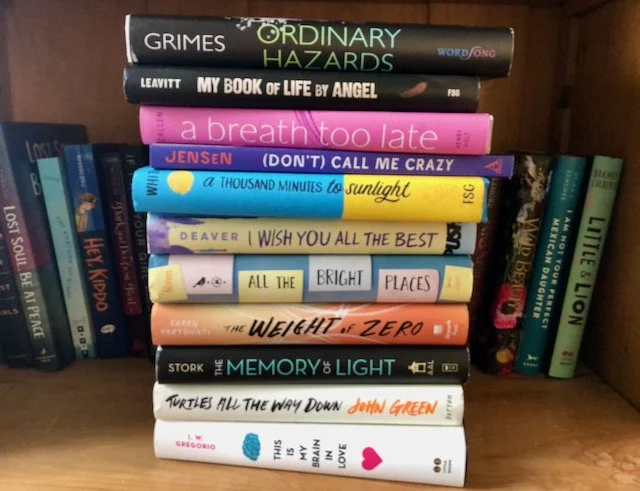
Resources
“Writing the Story of Mental Illness For Young Readers”
Article co-authored with Dr. Nancy Bo Flood for the Association of Writers and Writing Programs (AWP)
Want to help?
You can make a big difference. Learn more at #BeThe1To - the National Suicide Prevention Lifeline’s message for National Suicide Prevention Month and beyond, which helps spread the word about actions we can all take to prevent suicide.
We can all prevent suicide. You can make a video and share it on social media, learn how to help your friends, create a "coping strategies" plan, and more.
If you are worried that someone you care about might be suicidal, ask them. Then listen.
Have them call or text a crisis line or talk to a professional they trust: a doctor, a counselor, a therapist, a teacher.
Here are some signs your friend may need help.
Depression is the single biggest risk factor for suicide. It’s highly treatable.
Education and public awareness will prevent suicide.
According to the most recent U.S. Center for Disease Control (CDC) data (2017):
18% of almost 14,000 high school students surveyed in 2013 felt suicidal in the past year.
8% attempted.
It’s the second leading cause of death among young people aged 15-24.
LGBQT kids are almost 4 times more likely to be suicidal.
Bullying increases the likelihood of depression and suicidality (the term for feeling suicidal).
Chances are good that almost everyone between the ages of 14 and 18 knows someone who is or has been suicidal, who has attempted, or has completed suicide.
National Suicide Prevention Lifeline
U.S. & Canada:
CALL 988
or TEXT “GO” to 741741
In the U.K., contact the Samaritans at +44 (0) 8457 90 90 90 (UK - local rate). And from 5pm - midnight, GMT call the CALM Helpline at 0800-58 58 58.
It's 13 11 14 within Australia.
Understanding Suicide discusses some of the precipitating factors and reasons a person can be more susceptible to depression and possibly suicidality.
Exceptional Mental Health Fiction For Young Readers
We maintain a curated list of books for younger readers that deal with mental illness that we love, compiled by Ann Jacobus and author and psychologist Dr. Nancy Bo Flood. Feel free to…
download it and share.
Check out our list at BOOKOLOGY!
You can also read our article, “Writing the Story of Mental Illness for Young Readers,” for the Association of Writers and Writing Programs (AWP) .
Here's my post for #MHYALit series at Teen Librarian Toolbox on suicide and mental health. Read the whole series!
Want to write about characters who cope with mental illness themselves or with that of their loved ones? Here are some FAQs and important things to remember!
Reporting on Suicide is a resource for journalists is reporting on suicide. Novelists may want to take note, too.
Improper reporting or coverage of suicide can influence those already vulnerable and lead to additional suicide attempts and deaths. It’s called suicide contagion. It's extremely important for those in the media or entertainment to adhere to best practices as outlined here at the National Action Alliance for Suicide Prevention or at LIFELINE’s Media Resources.
Here’s a long list of (mostly) YA novels that deal with the subject of suicide (at GoodReads).
I volunteered as a counselor at SFSuicide Prevention, a suicide crisis line for many years, and speak to students at middle schools and high schools about suicide prevention. SFSP is part of the nationwide LIFELINE network of 165 crisis lines in 49 states. They answer over 200 calls a day from people all over the country and from all walks of life, in several languages.
One of the first questions we ask a caller is, “Are you feeling suicidal?”
Many say, “no.” They might be feeling depressed, sad, lonely, or overwhelmed, and just want someone to talk to. Or they may be concerned about a friend or family member who they fear is feeling suicidal, and need information and support.
For those who are feeling suicidal, it's a relief to say so to someone who cares, and it can actually reduce these feelings.
Suicide’s STIGMA gives it more power over all of us. Because it makes us uncomfortable, we have a hard time talking about it. Suicide is almost always fully preventable, but only if we talk about it.



